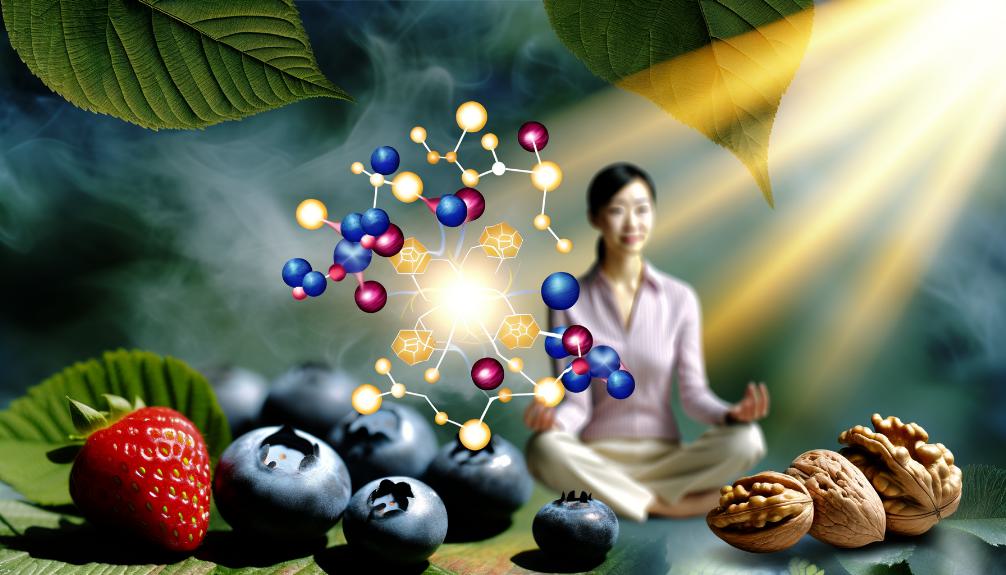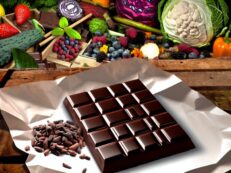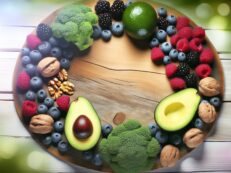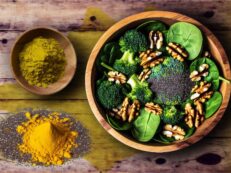
Imagine standing at the threshold of time, armed with the knowledge to turn back the clock on aging. You've got a powerful ally in NRF2, a protein that shields your cells from oxidative stress and age-related damage.
By adopting a diet rich in antioxidants, engaging in regular exercise, and minimizing chronic inflammation, you're already on the path to activating NRF2's protective mechanisms. Enhancing detoxification, optimizing sleep, and incorporating natural NRF2 activators can further fortify your defenses.
But there's more to this strategy than meets the eye, and understanding the synergy among these approaches could be the key to unlocking your body's full anti-aging potential.
Understanding NRF2 Activation
To effectively combat aging, it's crucial to understand how NRF2, a pivotal regulator of cellular defense mechanisms, is activated. NRF2, or Nuclear Factor Erythroid 2-Related Factor 2, plays a significant role in your body's response to oxidative stress, which increases with age. It's responsible for the expression of antioxidant proteins that protect against cellular damage caused by free radicals and other oxidants.
You're probably wondering how this activation occurs. Under normal conditions, NRF2 is kept in the cytoplasm by a protein called KEAP1 (Kelch-like ECH-associated protein 1), which facilitates its degradation. However, when oxidative stress is present, NRF2 is released from KEAP1, translocates into the nucleus, and binds to the Antioxidant Response Element (ARE) in the DNA. This process initiates the transcription of genes associated with antioxidant defense mechanisms.
This activation pathway underscores the importance of NRF2 in maintaining cellular homeostasis and defending against the detriments of aging. By understanding the mechanics behind NRF2 activation, you're better positioned to explore strategies that enhance its function, thereby bolstering your body's natural defenses against aging.
Antioxidant-Rich Diet Benefits
Incorporating a diet rich in antioxidants can significantly enhance your body's ability to combat oxidative stress, a key factor in the aging process. Antioxidants, such as vitamins C and E, polyphenols, and flavonoids, neutralize free radicals, preventing them from damaging cells and tissues. This protective mechanism is crucial for slowing down the cellular aging process and reducing the risk of age-related diseases.
Research shows that foods high in antioxidants, including fruits, vegetables, nuts, and whole grains, not only provide a defense against oxidative stress but also activate the NRF2 pathway. This pathway plays a pivotal role in the body's antioxidant response, regulating the expression of antioxidant proteins that protect against oxidative damage. By integrating these foods into your diet, you're not just fighting off immediate threats from free radicals but also enhancing your body's long-term resilience against aging.
Moreover, specific antioxidants have been linked to improved cognitive function and a reduced risk of cardiovascular diseases. For instance, the flavonoids found in berries and green tea have been associated with enhanced brain health and a lower incidence of heart disease. Therefore, adopting an antioxidant-rich diet isn't just a strategy for longevity; it's a comprehensive approach to maintaining overall health and vitality.
Regular Physical Exercise
While an antioxidant-rich diet significantly bolsters your body's defenses against aging, engaging in regular physical exercise amplifies these benefits by enhancing NRF2 activity and improving overall physical resilience. Exercise, by its very nature, induces a mild oxidative stress in your cells. This might sound counterintuitive, but it's actually a beneficial process. The stress signals your cells to adapt by boosting their antioxidant defense systems, including the upregulation of NRF2, a key protein that regulates antioxidant response.
Research shows that consistent physical activity increases the expression of NRF2, leading to enhanced protection against cellular damage and aging. This activity isn't limited to high-intensity workouts; moderate exercise, such as brisk walking, cycling, or swimming, can also trigger these protective mechanisms. The key is regularity and variety, incorporating both aerobic and resistance training to cover all aspects of physical health.
Moreover, exercise influences mitochondrial function, promoting the biogenesis of these cellular powerhouses. Healthy mitochondria are essential for energy production and play a vital role in preventing age-related decline. By maintaining an active lifestyle, you're not just building muscle and endurance; you're actively contributing to a cellular environment that's resilient against the aging process.
Reducing Chronic Inflammation
Another pivotal strategy in combating aging is reducing chronic inflammation, which research identifies as a key contributor to cellular aging and various age-related diseases. Inflammation, when chronic, can lead to DNA damage, promote telomere shortening, and interfere with cellular repair mechanisms, accelerating the aging process.
To counteract chronic inflammation, it's crucial you focus on a diet rich in antioxidants. Foods high in omega-3 fatty acids, like salmon and flaxseeds, can significantly dampen inflammatory responses. Additionally, incorporating a variety of colorful fruits and vegetables into your diet ensures you're getting a broad spectrum of antioxidants, which can neutralize free radicals and reduce oxidative stress, a key driver of inflammation.
Beyond diet, managing stress levels through mindfulness practices such as meditation and yoga has been shown to lower inflammation markers in the body. Chronic stress triggers the release of pro-inflammatory cytokines, exacerbating inflammatory responses. By adopting stress reduction techniques, you can directly influence your body's inflammatory status.
Lastly, getting adequate sleep is non-negotiable. Poor sleep patterns have been linked to increased levels of inflammation. Ensuring you get 7-9 hours of quality sleep nightly can help regulate the expression of genes associated with inflammation, thereby supporting your body's anti-inflammatory mechanisms.
Enhancing Detoxification Pathways
To effectively combat aging, enhancing your body's detoxification pathways is essential, as these systems play a critical role in eliminating toxins and reducing oxidative stress. NRF2, a protein that regulates the expression of antioxidant proteins, is pivotal in this process. It activates the antioxidant response element (ARE) pathway, which in turn upregulates the production of vital detoxification enzymes, including glutathione S-transferases and NAD(P)H:quinone oxidoreductase 1.
You can boost NRF2 activity through dietary choices. Foods rich in sulforaphane, such as broccoli and Brussels sprouts, and those containing curcumin, found in turmeric, have been shown to activate NRF2. This activation enhances your body's ability to detoxify harmful compounds and protect against cellular damage.
Moreover, regular physical activity has been linked to increased NRF2 expression. Exercise induces oxidative stress in a controlled manner, which in turn strengthens the body's detoxification and antioxidant defenses over time. This adaptive response helps in mitigating the accumulation of toxins and oxidative damage associated with aging.
Incorporating these strategies into your daily routine can significantly bolster your body's detoxification pathways, contributing to a reduction in oxidative stress and potentially slowing the aging process.
Optimizing Sleep Quality
Regularly optimizing your sleep quality plays a crucial role in slowing down the aging process by influencing NRF2 activity and enhancing the body's repair mechanisms. Achieving deep, restorative sleep cycles triggers vital biological processes that support cellular health and longevity. It's during these cycles that your body undergoes the most significant regeneration and detoxification, thanks to the activation of NRF2 pathways.
You'll want to establish a consistent sleep schedule, aiming for 7-9 hours of quality sleep per night. Research suggests that irregular sleep patterns can disrupt the body's circadian rhythms, impairing NRF2 signaling and hampering detoxification processes critical for preventing premature aging.
Moreover, reducing exposure to blue light from screens at least an hour before bedtime can significantly improve sleep quality. Blue light inhibits the production of melatonin, a hormone essential for regulating sleep cycles and possibly enhancing NRF2 activity. Investing in blackout curtains or a sleep mask can also help maintain darkness in your sleeping environment, further promoting melatonin production.
Incorporating these practices into your nightly routine can markedly boost your sleep quality, thereby supporting NRF2 activation and its anti-aging effects. Prioritizing sleep isn't just about rest; it's a fundamental strategy in your arsenal against aging.
Natural NRF2 Activators
Beyond optimizing sleep quality, exploring natural NRF2 activators offers additional avenues to combat aging effectively. These compounds can upregulate the expression of antioxidant proteins, reducing oxidative stress and potentially slowing the aging process.
You'll find potent NRF2 activators in certain foods and herbs. Sulforaphane, a compound in cruciferous vegetables like broccoli, Brussels sprouts, and kale, is particularly effective. It's been shown in studies to enhance NRF2 signaling, boosting your body's defense against oxidative damage. Likewise, curcumin, the active ingredient in turmeric, activates NRF2, offering anti-inflammatory and antioxidative benefits. Incorporating these into your diet isn't just good for your taste buds; it's a strategic move against aging.
Another notable NRF2 activator is resveratrol, found in the skin of red grapes, blueberries, and peanuts. Research suggests resveratrol can significantly increase NRF2 activity, promoting cellular health and longevity. Including these foods in your diet or considering supplementation could bolster your body's natural antioxidative mechanisms.
Frequently Asked Questions
How Does Genetic Variability in the NRF2 Gene Impact an Individual's Response to NRF2 Activation Strategies?
Your body's response to NRF2 activation strategies can vary due to genetic differences in the NRF2 gene.
These genetic variations affect how well you can combat oxidative stress and aging.
If you've got certain variants, you might respond better to these strategies, enhancing your body's defense mechanisms against cellular damage.
Conversely, less favorable genetic profiles might make it harder for you to reap the full benefits of NRF2 activation tactics.
Can NRF2 Activation Have Negative Effects if Overstimulated, and How Can One Monitor and Prevent Overactivation?
Yes, overstimulating NRF2 can have negative effects, including potential interference with cellular functions and promoting tumor growth. To monitor and prevent overactivation, you'll need to keep an eye on your body's responses to NRF2 activators and consult with healthcare professionals.
Regular check-ups and blood tests can help track biomarkers linked to NRF2 activity. It's crucial to balance activation to harness benefits while avoiding adverse outcomes.
Are There Any Pharmaceutical Medications That Are Known to Interfere With NRF2 Activation or Its Pathways, and How Should They Be Managed?
Yes, certain pharmaceutical medications can interfere with NRF2 activation or its pathways. For example, chemotherapeutic agents and some anti-inflammatory drugs may inhibit NRF2 activity, potentially reducing its protective effects against oxidative stress and inflammation.
You should consult with your healthcare provider to manage these interactions effectively. They might adjust your medication regimen or suggest alternative treatments to ensure that NRF2 activation remains optimized for your health needs.
How Do Age and Gender Influence the Effectiveness of NRF2 Activation Strategies, and Should Approaches Be Tailored Accordingly?
Age and gender significantly impact how effectively NRF2 activation strategies work for you. Research shows that as you age, your body's ability to activate NRF2 diminishes, making it harder to combat aging processes.
Men and women might respond differently to these strategies due to hormonal differences, necessitating tailored approaches. It's crucial you understand these nuances to optimize your anti-aging regimen, ensuring you're using methods most effective for your demographic.
What Are the Latest Advancements in Biotechnology or Nanotechnology for Enhancing NRF2 Activation Beyond Dietary and Lifestyle Changes?
Exploring the latest biotech and nanotech innovations, you'll find groundbreaking methods to boost NRF2 activation. Scientists have developed specific nanoparticles and gene editing tools, like CRISPR, to directly enhance NRF2 pathways, surpassing traditional dietary and lifestyle adjustments.
These advancements offer personalized and efficient strategies for combating aging, with ongoing research aimed at refining their safety and effectiveness. It's an exciting time as these technologies promise a new era in age management.
Conclusion
In conclusion, you've got the power to combat aging by activating NRF2. By embracing an antioxidant-rich diet, engaging in regular exercise, reducing chronic inflammation, enhancing detoxification pathways, optimizing sleep quality, and incorporating natural NRF2 activators, you're setting the stage for a healthier, more vibrant life.
Each strategy is backed by evidence, offering a practical approach to slow aging at the cellular level. Start today, and witness the transformative effects of NRF2 activation on your well-being.
Please validate any information here with a healthcare professional. The content is provided for education purposes, This content has not been evaluated by the Food and Drug Administration. Any advice or products mentioned is/are not intended to diagnose, treat, cure, or prevent any disease,










